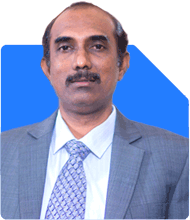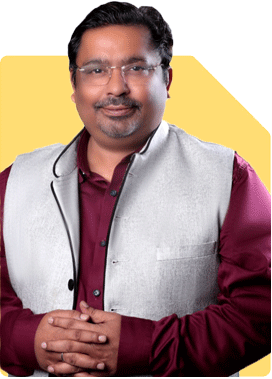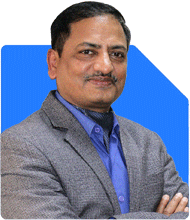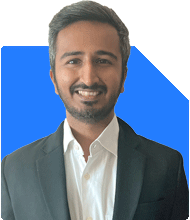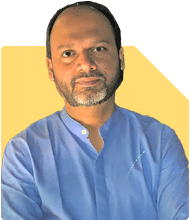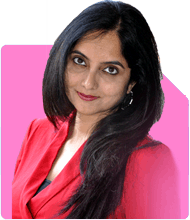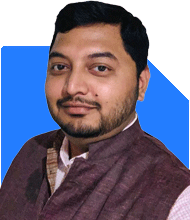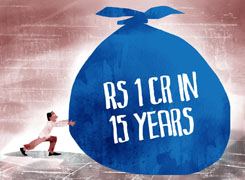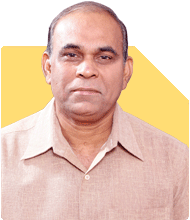Ramalingam Kalirajan |10874 Answers |Ask -Follow
Mutual Funds, Financial Planning Expert - Answered on Jul 08, 2025
He has an MBA in finance from the University of Madras and is a certified financial planner.
He is the director and chief financial planner at Holistic Investment, a Chennai-based firm that offers financial planning and wealth management advice.... more

hi sir. pls advice on apt fin instruments/ choices for a lumpsum investment of 5 lacs. I mean pls recommend options. Horizon of investment would be 10 yrs or so. Its idle for some time.
Why Planning Before Investing is Important
You must protect your capital.
But you also must grow it wisely.
Idle money loses power due to inflation.
With 10 years, you can take some risk.
Right mix of growth and safety is needed.
Mutual funds offer that balance.
Avoid short-term products for 10-year goals.
Direct stock investing can be risky alone.
Don’t go by tips or news-based investing.
Invest based on goals and risk level.
Lumpsum Vs SIP – What’s Better
SIP suits regular income like salary.
Lumpsum is good for one-time idle money.
But putting all at once is not safe.
It can enter at market peak.
Better to spread lumpsum using STP.
Start with parking in a debt fund.
Then move to equity through STP monthly.
This is safer and smooth.
Avoid lump sum in equity funds directly.
Why Mutual Funds Are Ideal
They are flexible and transparent.
You can track and switch any time.
You get professional management.
Diversification lowers the risk.
Returns are better than bank FDs.
Long-term tax is low for equity funds.
You get better growth with patience.
Easy to start and monitor.
Why to Avoid Index Funds
Index funds just copy the index.
They cannot reduce losses in falling markets.
They have no active management.
Not suitable when market is at high level.
You will ride full fall in a crash.
Index funds are not for conservative investors.
You cannot rely on them for protection.
Actively managed funds do better in India.
Why Not Direct Plans
Direct plans give no service or support.
You pick and manage funds yourself.
No one guides you on exit or switch.
You may choose wrong funds and lose money.
In direct plans, there is no review help.
With regular plans via MFD with CFP, you get advice.
They help adjust during market ups and downs.
Their service is worth the small extra cost.
Best Options to Invest Rs. 5 Lakhs Lump Sum
You can divide this into three buckets.
Bucket 1: Debt Fund (Rs. 1 lakh)
Put this in liquid or short-term debt fund.
This gives you liquidity and capital safety.
Can be withdrawn anytime for emergencies.
Ideal for sudden needs or buffer.
Helps with stability in total portfolio.
Bucket 2: STP to Equity (Rs. 3.5 lakh)
Park in arbitrage or ultra-short fund first.
Then do STP to equity funds monthly.
This avoids sudden market fall risk.
Ideal for smoother equity exposure.
You can do STP over 12 to 18 months.
Choose 2 to 3 good equity funds for STP.
Bucket 3: Hybrid Fund (Rs. 50,000)
This gives you equity plus debt in one.
Safer than full equity fund.
Good for moderate risk and stable growth.
Also useful when market is uncertain.
Fund manager adjusts exposure actively.
Suggested Fund Categories for Equity Portion
Choose actively managed funds only. Here are ideal categories:
Flexi Cap Fund
Manager can invest across large, mid, small caps.
Adapts to market cycles.
Useful for long-term growth.
Large & Mid Cap Fund
Mix of stability and returns.
Better than full midcap risk.
Good for balanced exposure.
Balanced Advantage Fund
Adjusts equity-debt mix dynamically.
Lowers downside risk.
Ideal for first-time equity investors.
Aggressive Hybrid Fund
65% equity and rest in debt.
Safer and more consistent than pure equity.
Suitable for 10-year horizon.
Additional Points to Consider
Do not keep this full amount in savings or FD.
Avoid gold, ULIPs, or insurance-cum-investments.
Do not buy NFOs or new schemes without record.
No need to invest in more than 3 equity funds.
One fund per category is enough.
Stay away from small-cap or sector funds.
Rebalance your funds every year.
Work with a CFP for better guidance.
This ensures long-term discipline and safety.
Tax Rules You Must Know
Equity Funds Taxation:
If held over 1 year, taxed as LTCG.
LTCG above Rs. 1.25 lakh taxed at 12.5%.
Below Rs. 1.25 lakh is tax-free.
Short term gains taxed at 20%.
Debt and Hybrid (below 65% equity):
Taxed as per your income slab.
No special benefit for long-term now.
Better to use equity-oriented hybrid funds.
Review and Monitoring
Check your portfolio once a year.
Avoid checking every week.
Don’t panic if market drops.
Market needs time to reward patience.
Switch funds only if performance lags.
Always take advice before making changes.
Keep emotions out of investing.
Life Insurance and Investment
If you hold LIC or ULIP plans:
These mix insurance and investment.
Check returns over 5 years.
Most give low returns like 4–5%.
Better to surrender if lock-in is over.
Reinvest in mutual funds for growth.
Buy pure term cover separately.
Finally
Rs. 5 lakh can grow well in 10 years.
You must plan it wisely.
Avoid direct stock or index options.
Use mix of debt, hybrid and equity funds.
STP is safer than lump sum in equity.
Keep emergency fund separately.
Don’t invest all in one category.
Review yearly with MFD having CFP certification.
Choose regular plans for service and rebalancing.
This ensures you stay on right track.
A proper plan avoids wrong decisions.
Best Regards,
K. Ramalingam, MBA, CFP
Chief Financial Planner,
www.holisticinvestment.in
https://www.youtube.com/@HolisticInvestment
You may like to see similar questions and answers below
Omkeshwar Singh | Answer |Ask -Follow
Head, Rank MF - Answered on Sep 16, 2021
Ramalingam Kalirajan |10874 Answers |Ask -Follow
Mutual Funds, Financial Planning Expert - Answered on May 31, 2024
Sanjeev Govila | Answer |Ask -Follow
Financial Planner - Answered on Oct 12, 2023
Ramalingam Kalirajan |10874 Answers |Ask -Follow
Mutual Funds, Financial Planning Expert - Answered on Aug 08, 2024
Vivek Lala |323 Answers |Ask -Follow
Tax, MF Expert - Answered on Aug 11, 2024
Mayank Chandel |2569 Answers |Ask -Follow
IIT-JEE, NEET-UG, SAT, CLAT, CA, CS Exam Expert - Answered on Dec 08, 2025
Mayank Chandel |2569 Answers |Ask -Follow
IIT-JEE, NEET-UG, SAT, CLAT, CA, CS Exam Expert - Answered on Dec 08, 2025

Mayank Chandel |2569 Answers |Ask -Follow
IIT-JEE, NEET-UG, SAT, CLAT, CA, CS Exam Expert - Answered on Dec 08, 2025
Mayank Chandel |2569 Answers |Ask -Follow
IIT-JEE, NEET-UG, SAT, CLAT, CA, CS Exam Expert - Answered on Dec 08, 2025
Mayank Chandel |2569 Answers |Ask -Follow
IIT-JEE, NEET-UG, SAT, CLAT, CA, CS Exam Expert - Answered on Dec 08, 2025
Anu Krishna |1746 Answers |Ask -Follow
Relationships Expert, Mind Coach - Answered on Dec 08, 2025
Ramalingam Kalirajan |10874 Answers |Ask -Follow
Mutual Funds, Financial Planning Expert - Answered on Dec 08, 2025
Samraat Jadhav |2499 Answers |Ask -Follow
Stock Market Expert - Answered on Dec 08, 2025
Ramalingam Kalirajan |10874 Answers |Ask -Follow
Mutual Funds, Financial Planning Expert - Answered on Dec 08, 2025
Radheshyam Zanwar |6737 Answers |Ask -Follow
MHT-CET, IIT-JEE, NEET-UG Expert - Answered on Dec 08, 2025





